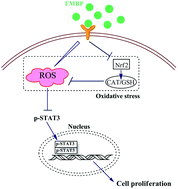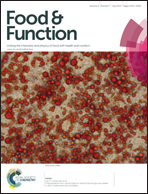Targeted anti-colon cancer activities of a millet bran-derived peroxidase were mediated by elevated ROS generation
Abstract
Foxtail millet (Setaria italica) is the sixth most important cereal in the world. In particular, the millet-derived active components play important roles in disease prevention. In this study, we found that a peroxidase from foxtail millet bran, named FMBP, displayed profound inhibitory effects on the growth of human colon cancer cells, but not on that of the normal colon epithelial cells. Mechanistic investigations suggested that the selective anti-cancer effects of FMBP were mainly achieved by inducing more accumulation of reactive oxygen species (ROS) in colon cancer cells than normal cells. The preferential ROS accumulation in cancer cells by FMBP appears to be partially attributed to the down-regulation of NF-E2-related factor 2 (Nrf2) expression, and the reduction of catalase activities and glutathione contents. The increased ROS accumulation is speculated to block the STAT3 signaling pathway, which results in the anti-proliferative effects on colon cancer cells. Therefore, these results suggest that the millet bran-derived peroxidase has a therapeutic potential in the management of colon cancer.


 Please wait while we load your content...
Please wait while we load your content...